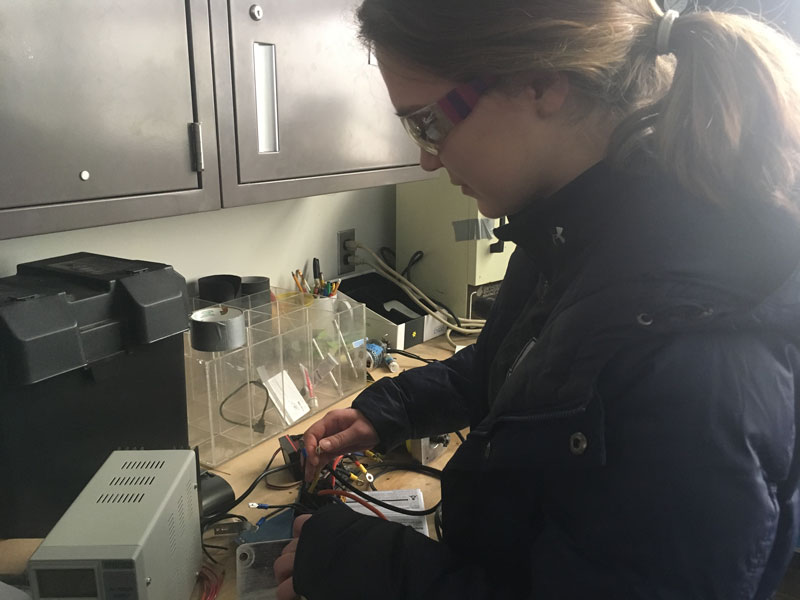Women in engineering on the rise at Pioneer
Members of the Innovative Vehicle Design Club are scattered throughout room E-107. They lounge on couches and do homework, waiting for everyone to arrive so they can begin to work on their projects. One writes a critical message about McDonald’s on the whiteboard, excited about how “triggered” the others are going to be — once they return from grabbing food at McDonald’s. It is exactly what the majority of the student body would expect to see from a bunch of “techies,” except for one small detail; multiple girls are in the room as well.
According to the Huffington Post and the American Society of Mechanical Engineers, while one-fifth of people in engineering school are women, they constitute only 11 percent of practicing engineers, and 38 percent percent of those women leave the field at some point in their careers. Even in Ann Arbor, there is still a clear discrepancy between male and female participation in engineering programs.
The main mission of the IVD Club is to design, build from scratch, and test an electric car for a competition in May. Club leader, senior Masaki Hada, says that the club helps students gain a better understanding of math, science, and engineering outside the classroom.
“When you’re in the club, it’s a lot more hands-on and you get to watch what you’re building firsthand,” Hada said. “Because there’s so few people, you watch what you build grow and you get a really big sense of accomplishment at the end.”
The club is similar to almost all other engineering programs across the country in that its roster includes a large contrast between male and female participants. Four members of the club, sophomores Helen Brush, Tess Gompper, and Natalie Trakanrungsi, and senior Sanomi Croos-Dabrera, are the only girls in the club out of 24 people. Last year Croos-Dabrera was the only one.
Brush and Gompper say that fear is a key factor in keeping women from engineering. “They know that they can do it,” Brush said. “They’re just intimidated by the fact that there’s no girls. They need to see [more females in engineering positions], and they’ll go ‘Okay, maybe I can do it.’”
This year the club attended the A2 Fall STEAM Expo, where science projects are presented to elementary school students at Ann Arbor STEAM. Gompper enjoyed seeing young girls at their presentation. She believes that it is important for everyone, especially girls, to be exposed to science early on, and that the Expo was a good place to “see representation from a young age”.
Gompper also says that seeing more female role models and peers in engineering will encourage more girls to try it. “I definitely wouldn’t have joined the club without Helen,” she said. “If girls have friends doing it I think they’ll be more likely to join.”
Finding ways to increase female involvement in engineering is an issue that affects all people, regardless of gender. “There are lots of problems engineering needs to solve, and we won’t be able to solve them with only half of the world’s population,” Brush said. Hada also commented that it is “extremely important” for more girls to pursue engineering.
The IVD Club is not only aware of this challenge, but they are taking measures to address it. Hada says that they have changed their approach to recruiting new members. “In the past our outreach hasn’t been targeted to women as much as men,” Hada said. “We’ve changed [it] to target it more towards everyone.”
Hada says that he thinks many girls are hesitant to join because they think it’s “not the thing for them,” but he promises it is and encourages more female students to join the club.
“Everybody can do it well,” he said. “We need all the help we can get.”


